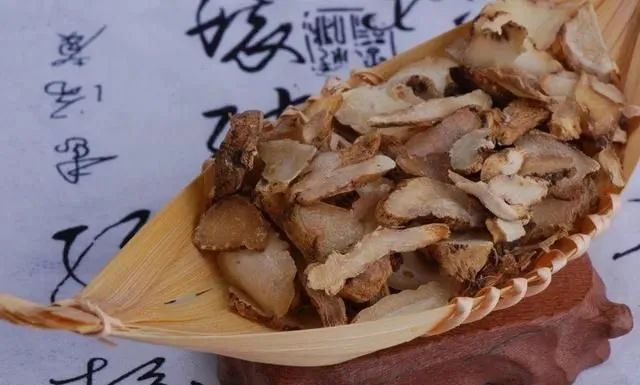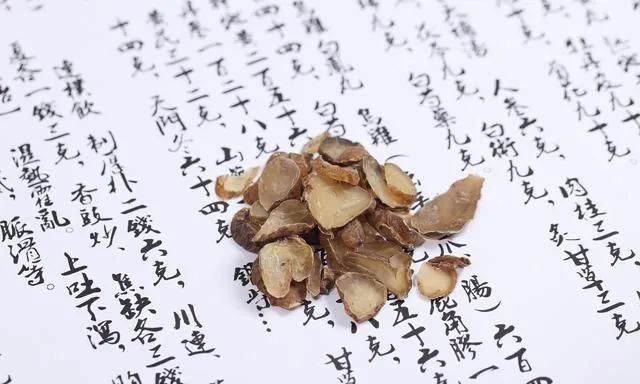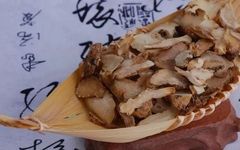
Aconite (Fu Zi), first recorded in the Shennong Bencao Jing, is named for its growth attached to the Aconitum (mother root). Therefore, it is generally considered that Aconitum is the mother root and Aconite is the child root. Aconite has the properties of reviving yang, supplementing fire to assist yang, dispersing cold, and eliminating dampness. It is used to treat conditions such as excess yin obstructing yang, profuse sweating leading to yang deficiency, vomiting, cold pain in the heart and abdomen, cold diarrhea, edema in children, wind-cold-damp bi syndrome, spasms, impotence, cold in the uterus, sores, and all diseases characterized by deep cold and chronic cold. Let’s explore the efficacy and proper usage of Aconite!

01
Efficacy and Functions of Aconite
1. Supplement Yang Qi
For individuals with kidney yang deficiency and fear of cold, Aconite can be taken to improve their condition. Due to its spicy and warming nature, Aconite can circulate through the body’s meridians, especially supplementing kidney yang, with effects of supplementing fire to assist yang and expelling wind-cold-damp pathogens.
2. Improve Blood Circulation
Aconite has beneficial effects on blood pressure and blood vessels, capable of dilating blood vessels and increasing blood flow. Its impact on blood pressure can vary according to individual constitution.
3. Expel Cold and Alleviate Pain
Individuals suffering from arthritis or generalized joint pain often have a strong aversion to cold. The warming properties of Aconite can dispel cold and dampness, providing significant relief for those with rheumatic pain. Aconite can be combined with Gui Zhi (Cinnamon Twig) for enhanced effects.
4. Anti-arrhythmic Effects
Aconite can enhance myocardial contractility, accelerate heart rate, increase cardiac output, and raise myocardial oxygen consumption, showing significant anti-bradycardic effects.
5. Anti-inflammatory Properties
Drinking Aconite decoction has a notable inhibitory effect on acute inflammation models. For symptoms such as spleen yang deficiency, cold pain in the abdomen, and loose stools, Aconite can be combined with Dang Shen (Codonopsis), Bai Zhu (White Atractylodes), Gan Jiang (Dried Ginger), and Zhi Gan Cao (Honey-fried Licorice) for better results.

02
Proper Usage of Aconite
1. Four Reverse Decoction: 1 piece of raw Aconite, 1.5 taels of dried ginger, 2 taels of honey-fried licorice.
2. Rescue Heart Decoction: 30-200 grams of Aconite, 60 grams of dried ginger, 60 grams of licorice, 10-30 grams of Korean ginseng, 60-120 grams of fresh cornelian cherry flesh, 30 grams each of powdered dragon bone and oyster shell, 30 grams of magnetite, and 0.3-0.5 grams of musk.
3. Aconite Porridge: 10 grams of processed Aconite, 15 grams of roasted ginger, 100 grams of japonica rice. Grind the two herbs into a fine powder, using 5 grams each time, and cook with japonica rice and water to make porridge. Alternatively, the two herbs can be halved, decocted for juice, and then added to the rice for porridge.
This recipe is derived from the Sheng Hui Fang. It uses Aconite to warm the interior, disperse cold, and alleviate pain, while roasted ginger warms the middle and disperses cold, stopping diarrhea. It is used for internal cold abdominal pain and diarrhea with loose stools.
Aconite Porridge
4. Aconite and Job’s Tears Porridge: 10 grams of processed Aconite, 30 grams of Job’s tears, 100 grams of japonica rice. Decoct the Aconite for juice, then add Job’s tears and japonica rice, cooking with water until the porridge is ready. Divide into two servings.
This recipe uses Aconite to disperse cold and alleviate pain, while Job’s tears help eliminate dampness and relax the muscles. It is used for wind-cold-damp bi syndrome, joint pain, and limb spasms.
5. Aconite Stewed Lamb: 250 grams of fresh lamb, 10 grams of processed Aconite. First, wash the lamb and cut it into pieces, then place it in a clay pot with water, bringing it to a boil over high heat, then simmering for 1.5 to 2 hours. Remove the herbal residue and consume the soup and meat in portions. This dish warms the meridians, disperses cold, expels wind, and tonifies qi and blood, suitable for rheumatic joint pain.
6. Aconite Wine: 30 grams of Aconite, 500 grams of white liquor. First, crush the Aconite and place it in a container, adding the liquor, sealing it, and letting it steep for a week before drinking. This preparation warms the meridians, disperses cold, and alleviates pain, suitable for cold limbs, profuse cold sweat, pale complexion, vomiting, cold diarrhea, aversion to cold, and abdominal cold pain.

——Previous Reviews——
|
Health |
Effects and Functions of Chrysanthemum and Cassia Seed Tea |
|
Wellness |
Effects and Functions of Kudzu Root Powder |
|
Encyclopedia |
Effects and Functions of Cassia Seed Tea |
|
Science Popularization |
Effects and Functions of Notoginseng Powder |
|
Knowledge |
Effects and Functions of Deer Antler Glue |
END
Dear reader, if our article has been helpful to you,please mark us as a star★! This way, you won’t miss our daily updates!

【Disclaimer】: This article is sourced from the internet, and the copyright belongs to the original author. Please indicate the source when reprinting. Sharing this article is for the purpose of dissemination and learning exchange, and we do not take responsibility for the views expressed in the article. The various dietary therapy recipes, medicinal formulas, and prescriptions mentioned are for reference and learning only; non-professionals should not use them blindly! The advertisements in the article are automatically generated by the system and are unrelated to this account. If you have any questions, please leave a message online, and we will handle it as soon as possible. Thank you.
Click to spread health and share knowledge~👉

